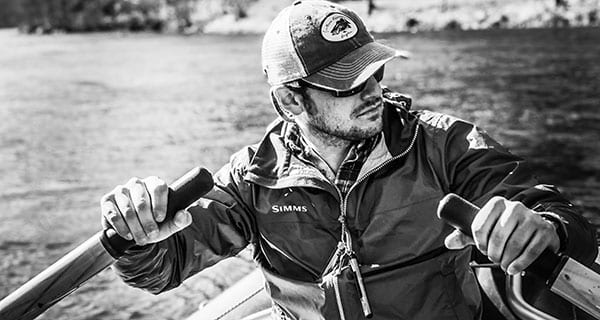Some of my favorite trips that I have run in the past as a guide have been with kids, some as young as 7, introducing them to fly fishing. The excitement when they hook up into their first fish are moments I never get tired of seeing, and it makes the tangles and lost flies getting to that point more than worth it.
Speaking of tangles and lost flies, while it is rewarding, it can also definitely be a challenge. With that said, I also have seen plenty of really young kids barely able to hold a rod outfish their parents 5 to 1 (their guide may or may not have also put them in the best spot on the river, to be fair).
The idea of taking kids and teaching them how to fly fish can be intimidating, especially if you don’t have much in the way of fly fishing experience for yourself. Here’s a few tips on how to make their time on the water and in the outdoors as enjoyable as possible.
1. Bluegill, River Chubs, and Fresh Stockers are your Best Friend: I’m not saying that kids are incapable of catching something like a wild trout or a smallmouth bass on the fly, because I’ve seen it happen plenty of times in my guiding career. However, if I can, I usually will opt for one of these three fish, especially if the kids are really young. Those fish are easy to catch and relatively plentiful. It wouldn’t be hard to say that bluegills in farm ponds got more people into fly fishing than any other type of fish.
2. “Pancakes and Eggs”: This is a technique I learned from one of my mentors that works wonders when helping teach kids how to fly fish. Many of them don’t have the muscle dexterity when they’re starting out to set the hook very easily, and this works especially well for trout that have been freshly stocked in a river. Take the largest bobber/ indicator you can find and tie off a big yarn egg fly around 6-8” under the indicator (the bobbers, the pancake, and the egg fly is obviously the egg). The stockers’ teeth will usually get tangled into the yarn of the egg when the fish eats, and the suction of the indicator going down into the water so close to the fly essentially sets the hook for them. Trust me when I say, this is absolutely deadly, and will also work for bluegill in ponds as well.
3. Take the Pressure Off: It’s easy to get caught up in wanting to be the hero parent, mentor, or guide that puts a kid on tons of fish their first time holding a rod, but I’m honest, that’s sometimes not realistic. The best type of expectations to have when it comes to fly fishing is to simply not have very many at all other than making sure they are having fun. This could mean putting the rod up and picking up rocks to look for bugs, teaching them how to skip a rock, letting them splash around in the water, etc. The nice thing about taking kids fishing is that it reminds us in some ways of the whole point of going in the first place, and that is to just have fun with it and not take it so seriously.
The last piece of advice I’ll give for those teaching kids how to fly fish is to simply just be patient. It can take kids sometimes years to garner a serious interest in it, and it’s better to not be pushy with anything and just allow them to have fun being outside. It can help them find a lifelong passion that they’ll have you to be grateful for, just as how I am eternally grateful to the people in my life that took the time to take me fishing when I was a kid.
Ethan Hollifield is a member of a conservation organization called 2% For Conservation and a guide for Southern Appalachian Anglers.
